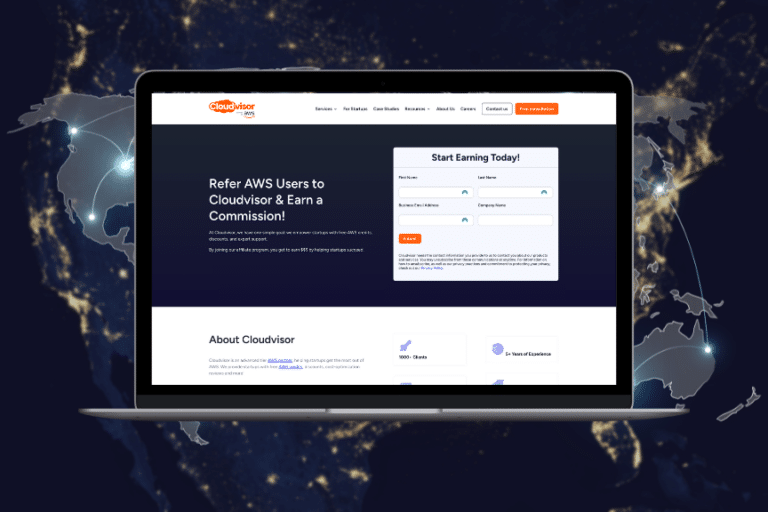Amazon Elastic Container Registry (ECR) by Amazon Web Services (AWS) provides a powerful solution for storing, managing, and deploying Docker and Open Container Initiative (OCI) images. This fully managed service is designed to scale effortlessly while maintaining high security standards, integrating smoothly with Amazon Elastic Container Service (ECS), Amazon Elastic Kubernetes Service (EKS), and AWS Lambda. In this comprehensive guide, we will explore the operational mechanics of Amazon ECR, its critical components, standout features, and the necessary steps for configuration and implementation, helping businesses streamline their containerized application workflows.
Table of Contents
What is AWS ECR?
Amazon Elastic Container Registry (AWS ECR) is a fully managed Docker container registry provided by Amazon Web Services (AWS). It allows developers to store, manage, and deploy Docker and Open Container Initiative (OCI) images. ECR is designed to be highly scalable and secure, offering a reliable solution for container image management. It integrates seamlessly with Amazon Elastic Container Service (ECS), Amazon Elastic Kubernetes Service (EKS), and AWS Lambda, providing a comprehensive ecosystem for managing containerized applications.
How Amazon ECR works
Amazon ECR eliminates the need to operate container repositories or worry about scaling the underlying infrastructure. ECR hosts your images in a highly available and scalable architecture, allowing you to deploy containers for your applications reliably. The service is accessible over HTTPS, ensuring secure transmission of your container images. It also integrates with Amazon Inspector for automated vulnerability assessment scanning, enhancing the security of your container images.
Components of Amazon ECR
Registry
The Amazon ECR private registry is a fundamental component provided to each AWS account. It serves as a secure and organized storage space where users can create multiple repositories. These repositories are versatile, allowing for storing not just Docker images but also Open Container Initiative (OCI) images and OCI-compatible artifacts. This flexibility is crucial for teams working with a variety of container formats and ensures that Amazon ECR can cater to a broad range of container management needs.
Authorization Token
Security and access control are paramount in Amazon ECR, and this is where the Authorization Token plays a critical role. Before a client can push or pull images to or from an Amazon ECR private registry, it must authenticate itself as an AWS user. This authentication process is handled through an authorization token, ensuring that only authorized users or systems can access the container images. This mechanism is vital for maintaining the integrity and security of the images stored in the ECR.
Repository
At the heart of Amazon ECR are the repositories. Each repository within ECR acts as a dedicated space for housing Docker and OCI images, along with OCI-compatible artifacts. These repositories are not just storage units but are also integral to the version control, organization, and deployment of container images. They enable developers to manage their container images efficiently, track different versions, and ensure that the correct image is deployed in each instance.
Repository Policy
Repository policies in Amazon ECR allow users to define and control access to their repositories and the contents within. These policies are crucial for enforcing security protocols and ensuring only authorized personnel can access specific container images. By setting repository policies, organizations can manage user permissions, control the actions that can be performed on the images, and maintain a secure environment for their containerized applications.
Image
The images stored in Amazon ECR repositories are more than just static files; they are the building blocks of containerized applications. These images can be used locally on development systems, facilitating testing and development processes. Furthermore, they are integral to Amazon ECS task definitions and Amazon EKS pod specifications, enabling seamless deployment and management of containerized applications in the cloud. This versatility makes Amazon ECR a critical tool for developers working in containerized environments.
Features of Amazon ECR
Amazon ECR offers several features to enhance the management of container images:
- Lifecycle Policies: Manage the lifecycle of images in your repositories by defining rules for cleaning up unused images.
- Image Scanning: The scan-on-push feature identifies software vulnerabilities in your container images.
- Cross-Region and Cross-Account Replication: Easily replicate images across different regions and accounts.
- Pull Through Cache Rules: Cache repositories in an upstream registry in your private Amazon ECR registry.
Configuration and implementation of Amazon ECR
To start using Amazon ECR, you need to set up the AWS Command Line Interface and Docker. The process involves creating a repository in your private registry and using Docker CLI commands to push and pull images. Amazon ECR supports both private and public repositories, allowing you to control who can access your images. The service is also integrated with AWS Identity and Access Management (IAM) for secure access control.
Conclusion
In conclusion, Amazon Elastic Container Registry (ECR) is a vital tool for businesses looking to streamline their container management processes. With its seamless integration with other AWS services, robust security features, and scalable architecture, AWS ECR simplifies the storage, management, and deployment of Docker and OCI images. By leveraging ECR’s features, such as lifecycle policies, image scanning, and cross-region replication, businesses can enhance their operational efficiency and maintain a secure containerized environment. Embracing AWS ECR can significantly contribute to more efficient, secure, and scalable containerized application management.






